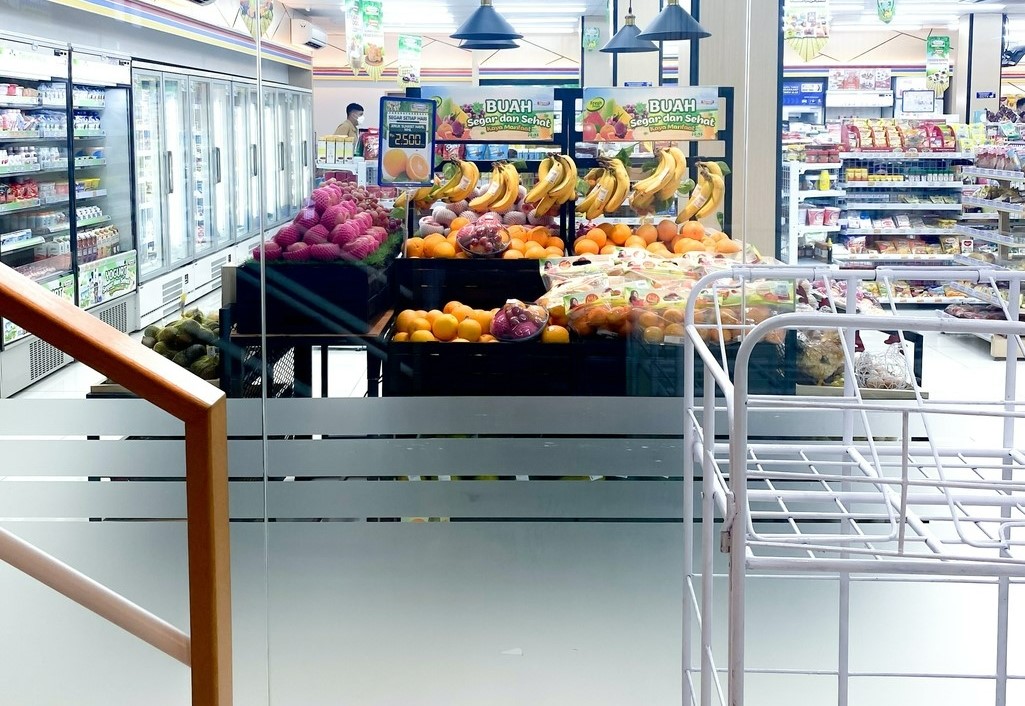
According to the National Association of Convenience Stores (NACS), there are over 150,000 convenience stores in the United States. Competition in the industry is high, with rival operators often located just across the street from each other. Purchases at these venues account for 80% of all fuel sold nationally. The NACS also reports that 44% of customers come in to the store when buying gas. Every one of those visits is a chance for your location to generate revenue.
You’ve got to do all you can to capitalize on every one of these opportunities.
The most successful managers are those who don’t leave conversion to chance. They carefully anticipate their customers’ needs and wants. They prepare for the kind of consistently high-quality consumer experience that builds brand loyalty by frequently gathering and analyzing a broad range of operation metrics.
You’re probably already looking at per-transaction and monthly sales figures, but these are not the only numbers that matter. Tracking these five metrics across locations will give you a higher-level view of what is and isn’t working, creating a more immediately responsive environment and boosting profits.
Checklist Completion Rate
Author and public speaker Chinmai Swamy defines a checklist as, “a list of items to help you produce results with speed and zero errors.” Hopefully, you’re already using checklists to ensure the quality of procedures around opening, closing, cleanliness. What are you doing to supervise the process? For many companies, the answer to that question is, “not enough.”
It’s all too common for businesses to use antiquated checklist systems. An employee grabs a clipboard stacked with copies of documents that were created years ago and performs a perfunctory check. A store manager glances at the paper and adds it to a pile. Periodically, a regional manager visits the location, takes the pile, and stores it in a dusty binder back at the home office. No one in the chain takes the time to monitor line-by-line compliance or manually enter the data into a spreadsheet for analysis. They have other, higher priorities.
A digital checklist solution transforms that process by allowing managers to easily and quickly see that checklists have been completed in full and on time with nothing more than a glance at their phones. Uploaded photos offer additional documentation. Every employee at every location must become more accountable for adhering to brand standards.
Time on Task
You’ve devoted time and thought to each item on your opening, closing, safety, and cleanliness checklists. Each standard must be adhered to every time, but there’s a conundrum. On one hand, your employees need to devote an appropriate amount of time to the work, rather than breezing through the job. On the other hand, in order to prioritize the high-level customer service that you expect, they must not use it as an excuse to dawdle. Do you know how long it takes your employees to complete their checklist operations?
Site visits are another operational task in which time management must be a priority. Busy regional managers need to spend enough time at each location to conduct inspections, collect information, and offer feedback without wasting time that you need them to allocate to other responsibilities.
Paper processes can’t offer information about time on task. A digital system provides this data. By tracking how your employees are managing their time at work, you can ensure efficiency.
Repeated Failed Tasks
Customers demand a predictable, high-quality experience regardless of location. For multi-unit operators, establishing and enforcing brand standards across stores is the key to consistency. As the market has expanded and competition has grown, it has become increasingly essential to monitor successful compliance around duties like greeting customers, sanitizing equipment and restocking.
Digital checklists and assessment tools make it simple for managers to ensure that these tasks are happening on schedule, to notice recurring deviations from routine, and to identify employees and locations that are repeatedly failing to accomplish goals. These metrics support examination, evaluation, and revision of brand standards as well as employee reviews and performance improvement plans.
Incident Resolution Time
Checklists offer insight into more than just cleanliness and inventory. An appropriately crafted checklist will also have employees looking at data relevant to food and workplace safety. When a checklist reveals a problem, resolution time is critical. Fixing these issues doesn’t just improve customer experience; it mitigates risk.
Even combined with phone or video calls, paper-and-pen systems don’t give managers true insight into how long it takes on-site employees to bring their location back to standards after an incident. There’s too much back and forth, too much time spent on hold. With a digital checklist system, store employees can share information and photos in real time, allowing managers to use data and metrics to improve resolution times.
Operational Assessment Scores
It’s not enough to perform assessments; you’ve also got to score them. Once you begin gathering and analyzing your metrics, you have everything you need to quantify and grade success. You can use your data to provide each location, auditor, and region in your brand with an evidence-based assessment score.
With the right digital field assessment tool in place, everyone from hourly employees to higher-level managers knows exactly how their scores were generated. Areas of weakness are identified. Paths to change are clarified. Brand standards are enforced and customer experience is improved.
Does it work? Here’s what Jeff Taylor, Director of Stores for Last Minit Mart, had to say about his brand’s experience after transitioning to a digital field assessment tool: “We’ve seen a steady increase in assessment scores across all locations and as a result, we’ve seen a significant improvement in our stores cleanliness and adherence to food safety standards.”
You can see the same improvement at your convenience stores by tracking the metrics your brand needs to succeed.
With DailyChex and AuditApp by MeazureUp, owners and managers can:
- Monitor checklist compliance and maintain brand consistency from anywhere using existing devices
- Boost efficient time management across locations
- Respond promptly to issues and concerns
- Observe, record, and address standards infractions
- Improve environmental practices by reducing supply consumption
Join the multi-unit franchise operators using MeazureUp’s digital field audit apps to track operations and ensure brand consistency. Schedule a demo today.

